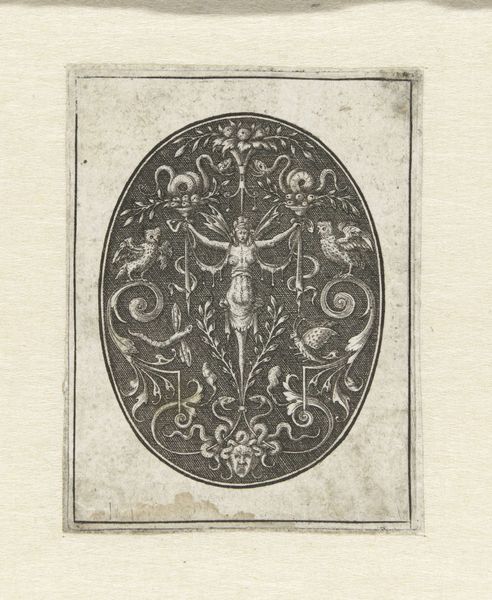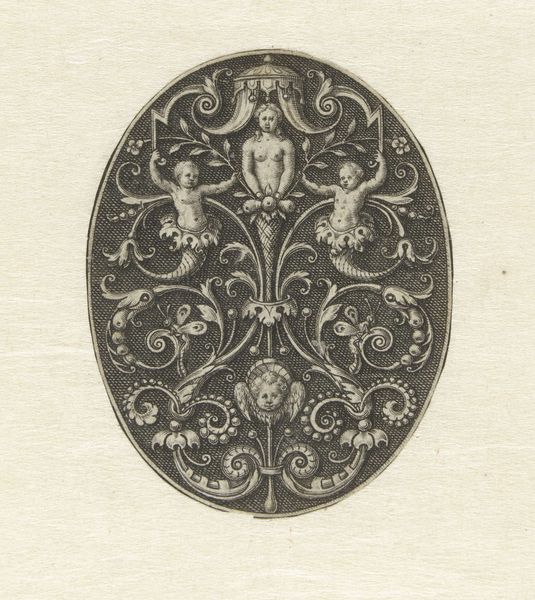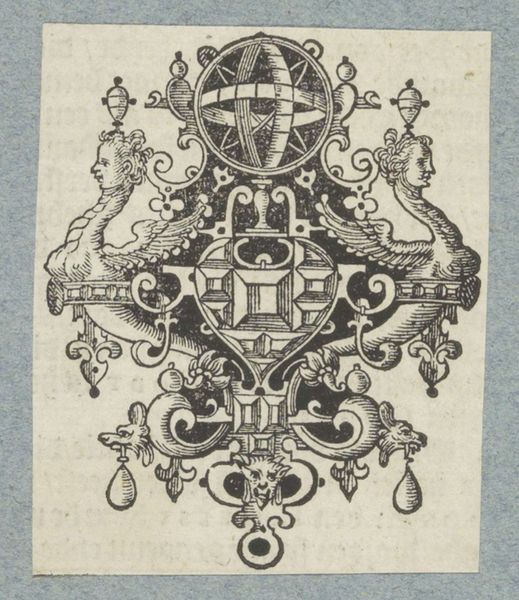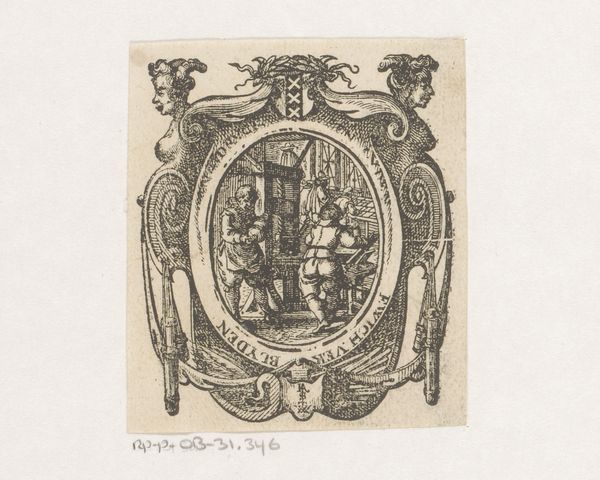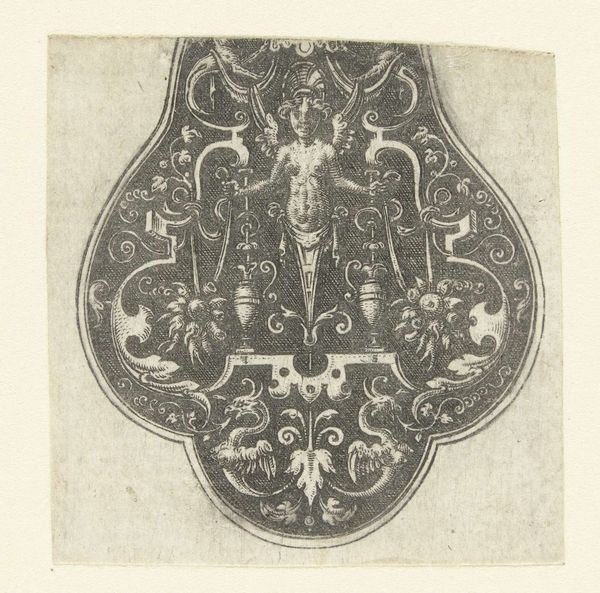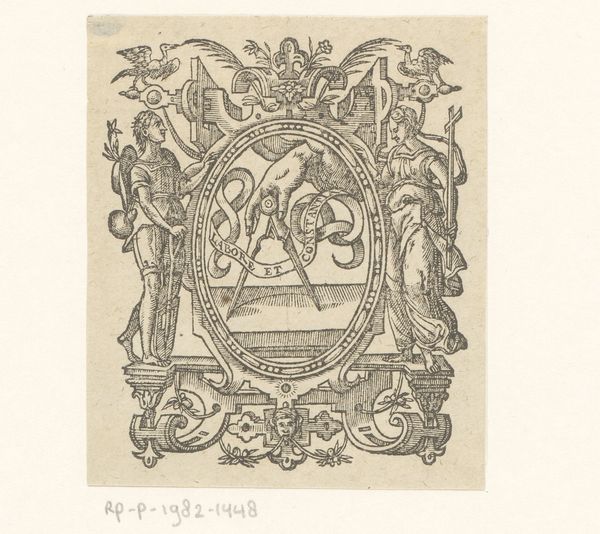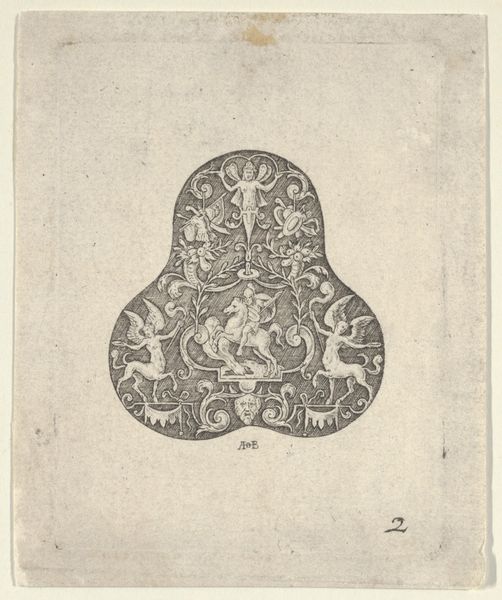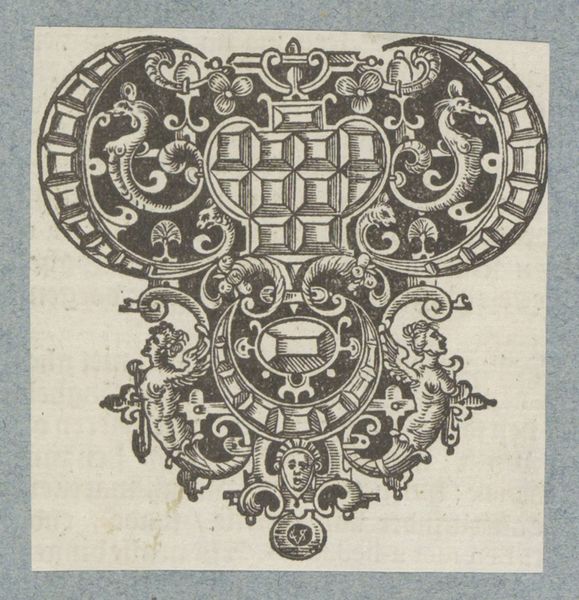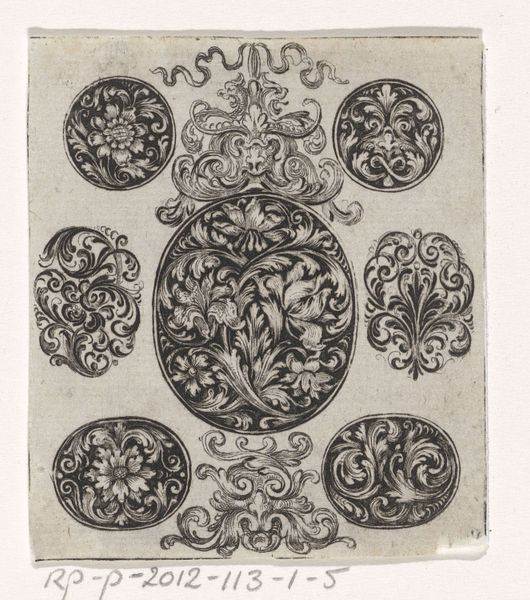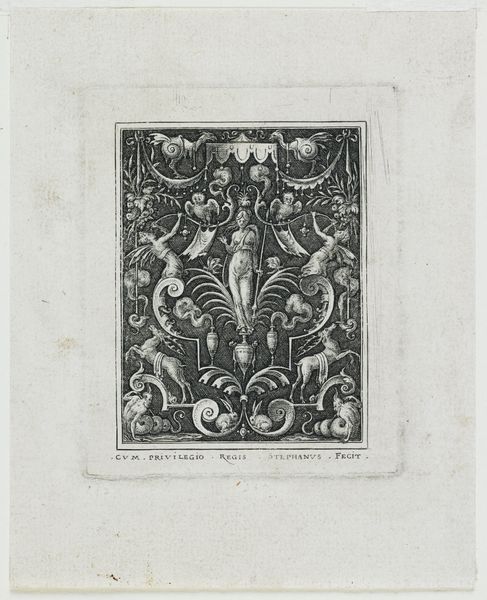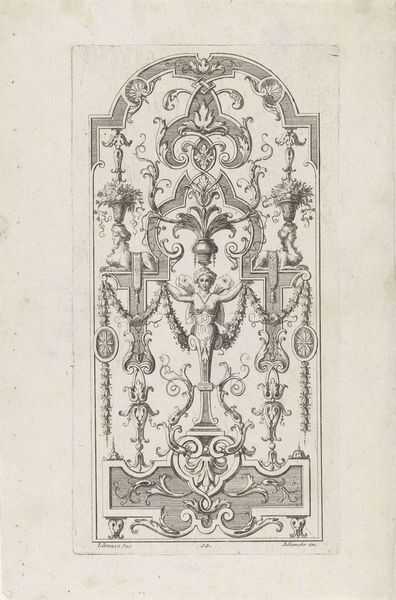
print, intaglio, engraving
#
aged paper
#
toned paper
#
light pencil work
#
allegory
# print
#
intaglio
#
pencil sketch
#
old engraving style
#
mannerism
#
figuration
#
personal sketchbook
#
pen-ink sketch
#
ink colored
#
sketchbook drawing
#
history-painting
#
sketchbook art
#
engraving
Dimensions: height 65 mm, width 49 mm
Copyright: Rijks Museum: Open Domain
Curator: What strikes me immediately is the symmetry and fantastical nature of this image. It feels like something out of a dream, almost unsettling despite its decorative qualities. Editor: Indeed. We’re looking at an intaglio print by Johann Israel de Bry, titled "Ovaal met in het midden een vrouw met vleugels"– "Oval with a woman with wings in the middle." It dates from roughly 1571 to 1623 and is currently held in the Rijksmuseum collection. Curator: The woman with wings is fascinating. Given the time period, how are we to understand this figure? Is it a mythological being, an angel, or something else entirely? What narratives were at play here? Editor: That’s a very important question. During the late 16th and early 17th centuries, imagery was highly codified and politically charged. Allegory was a favored means of representing complex social, religious, and philosophical ideas. The winged woman, nestled within elaborate decorative motifs, suggests the artist was interested in conveying symbolic meanings around power, knowledge or perhaps even freedom. Curator: Freedom maybe. She also looks caged in a way, trapped by all the ornate designs that seem to engulf her. This reading seems in sync with much feminist theory that calls into question the role assigned to women during that time. Editor: Certainly, considering how gender roles were performed within early modern society is central to interpreting this work. I also wonder if De Bry drew influence from earlier traditions of representing female figures. Prints, circulating as they did, could affect a very wide audience. How were they encouraged to perceive the messages contained? Curator: Well, whatever the precise intent, its creation and subsequent circulation must have ignited some intriguing responses, particularly among women of the era who surely held their views, struggles, and interpretations. Editor: Undoubtedly. What fascinates me most is the dialogue this piece opens up about the power of imagery, especially considering its public function in conveying complex societal norms. Curator: Agreed. It makes you think about who created the imagery, what messages they aimed to send, and, most importantly, how people then and now have come to their understandings of the artwork's intent. Editor: A great case of an image that, while decorative at first sight, urges us to examine the intersection of art, society, and meaning in early modern Europe.
Comments
No comments
Be the first to comment and join the conversation on the ultimate creative platform.

